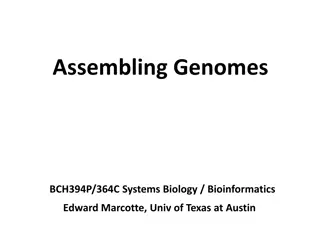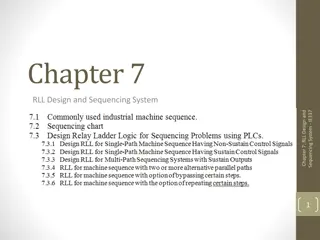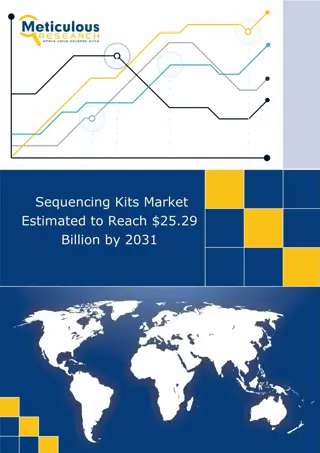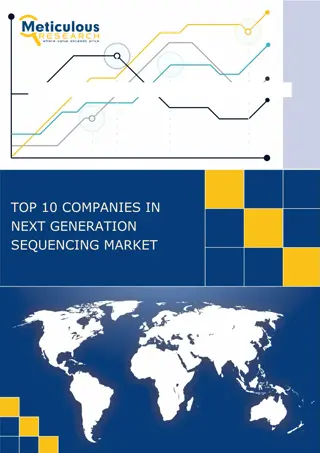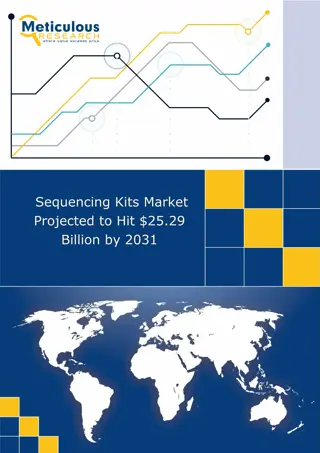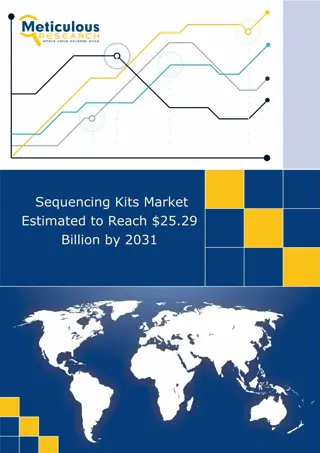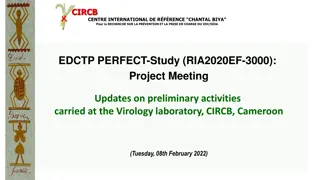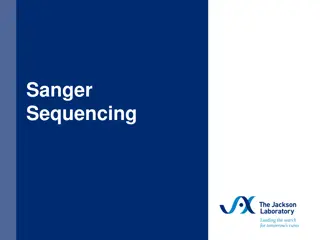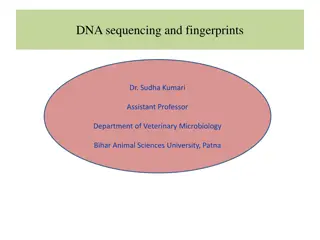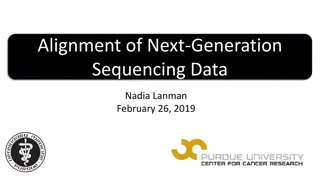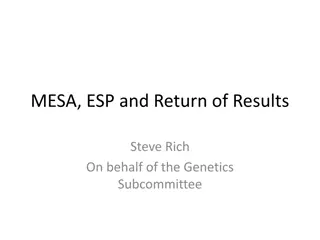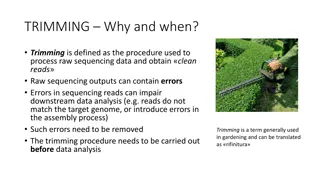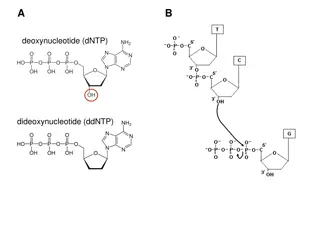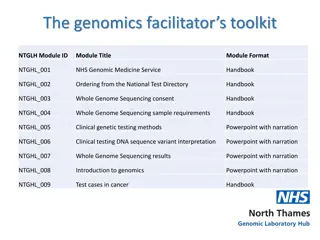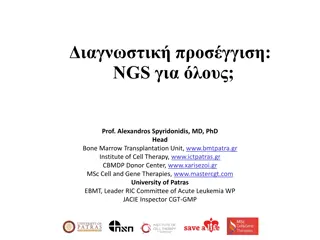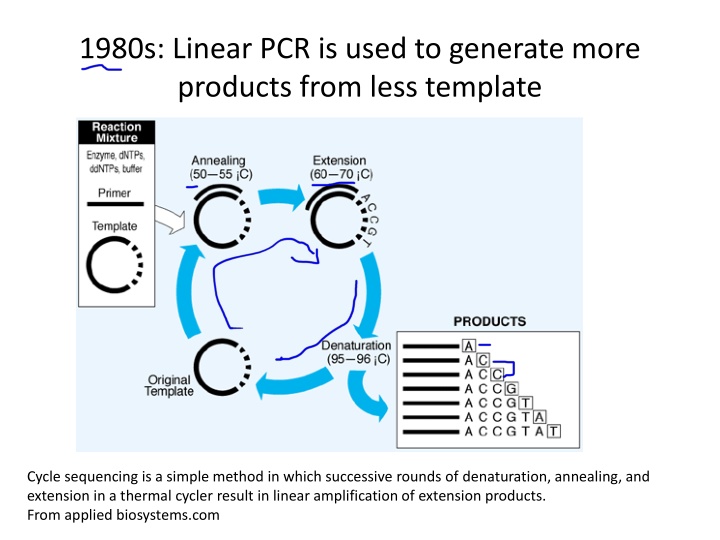
Advancements in DNA Sequencing Techniques
Discover how linear PCR and current Sanger sequencing methods have revolutionized DNA amplification and sequencing processes, enabling efficient generation of terminated fragments with fluorescent dyes for accurate analysis and direct computer recording of DNA sequences in real-time.
Download Presentation

Please find below an Image/Link to download the presentation.
The content on the website is provided AS IS for your information and personal use only. It may not be sold, licensed, or shared on other websites without obtaining consent from the author. If you encounter any issues during the download, it is possible that the publisher has removed the file from their server.
You are allowed to download the files provided on this website for personal or commercial use, subject to the condition that they are used lawfully. All files are the property of their respective owners.
The content on the website is provided AS IS for your information and personal use only. It may not be sold, licensed, or shared on other websites without obtaining consent from the author.
E N D
Presentation Transcript
1980s: Linear PCR is used to generate more products from less template Cycle sequencing is a simple method in which successive rounds of denaturation, annealing, and extension in a thermal cycler result in linear amplification of extension products. From applied biosystems.com
Current Sanger sequencing use dideoxy terminators that have different fluorescent dyes attached From Applied Biosystems Dyes are attached to the ddNTPs Only one reaction tube per sample, instead of four (isotope method) Fluorescent fragments are generated by incorporation of dye-labeled ddNTPs. Each different dideoxy nucleotide (ddATP, ddCTP, ddGTP, or ddTTP) carries a different colored dye. All terminated fragments (those ending with a ddNTP) contain a dye at their 3 end Only one lane/sample on gel, instead of four (isotope method)
Overview of procedure Tube contains all four fluorescently labelled dideoxynucleotides Linear PCR is used to generate multiple rounds of terminated fragments Sample is loaded in one capillary
The output of the detector can be sent directly to a computer and the DNA sequence recorded (in real time) as the gel is being run Example of output:

